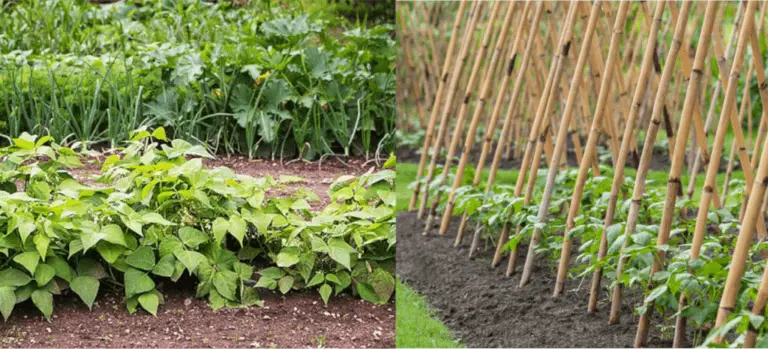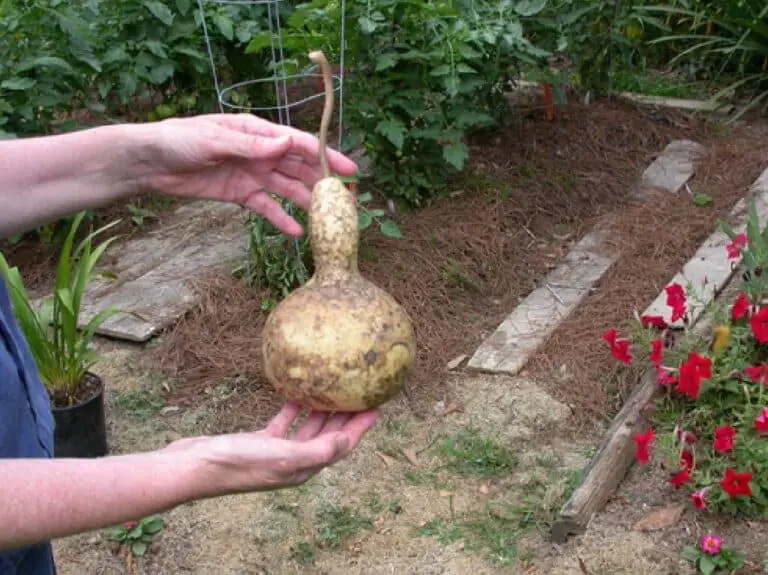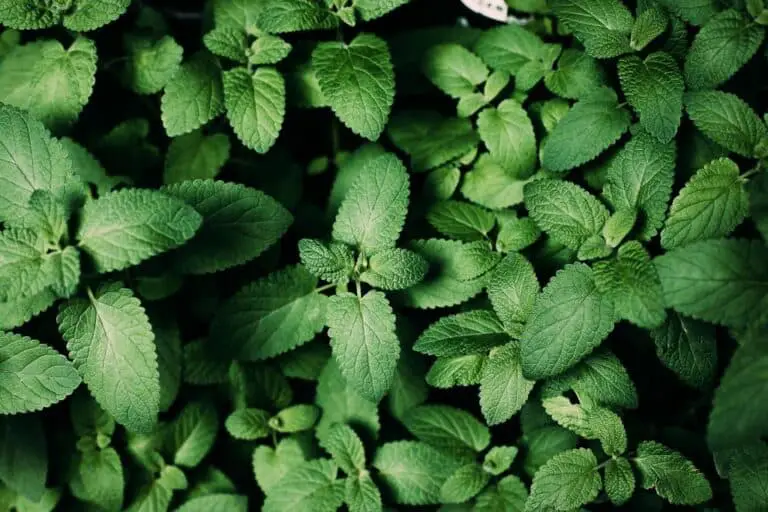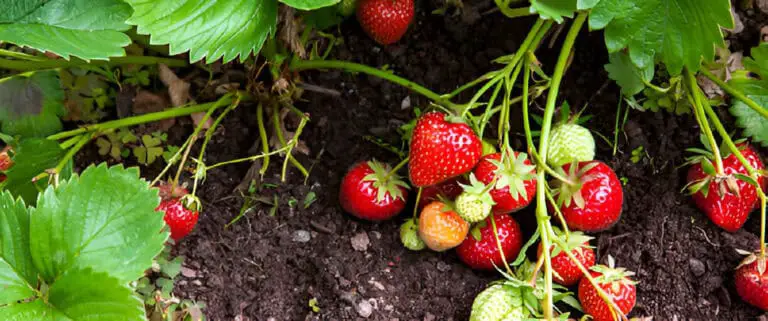Staking Tomato Plants: Tips and Tricks for Easy and Effectife Way To Do It
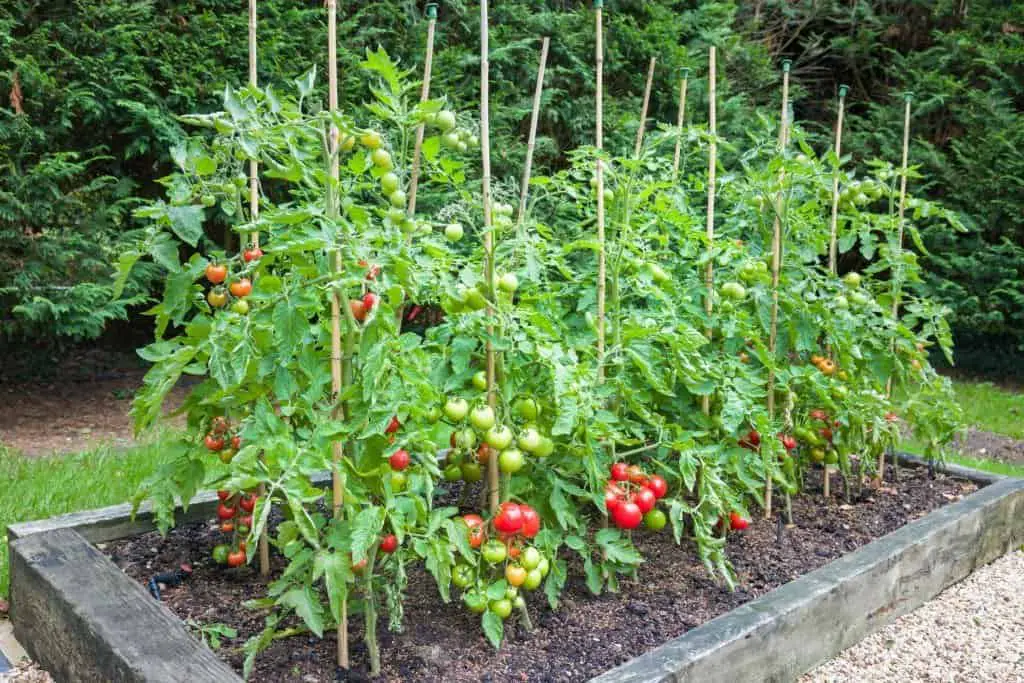
Are you tired of dealing with falling, unproductive tomato plants in your garden? Look no further!
Staking your tomato plants is the key to making sure they grow well, give you more tomatoes, and are easy to care for. Staking your tomato plants can be a tricky task, but with these tips and tricks, you will be able to make it easier.
In this post, we’ll cover everything you need to know about staking your tomato plants the right way, from choosing the best stake to training and pruning your plants.
Keep reading to find out the best ways to make sure your tomatoes are supported and thriving!
What is Plant Staking Support?
Plant staking is a method of providing physical support to plants, typically tall or heavy plants. This support helps them stand upright and prevents them from falling over. It is a common practice in gardening and horticulture and is used to keep plants healthy and promote their growth.
There are different types of staking support available, including bamboo stakes, wooden stakes, metal stakes, and trellis systems. Each type has its own pros and cons, and the choice of which one to use will depend on the specific needs of the plant, the location, and the gardener’s preferences.
Proper staking support is essential for the health and growth of plants. It gives the plants the physical support they need to stand up straight, which improves air flow, lowers the risk of disease, and increases the amount of fruit they produce. Additionally, it makes the gardening process more efficient and easier to manage.
The Advantages of Staking Tomato Plants
As was already said, staking tomato plants is an important step to make sure they stay healthy and stand up straight. By giving the tall, top-heavy plants something to stand on, you can keep them from falling over and breaking. There are also some other benefits to staking tomato plants, such as better fruit quality, less disease, and more tomatoes.
One of the main advantages of staking tomato plants is that it can improve the quality of the fruit. By keeping the plant upright and off the ground, the tomatoes are less likely to rot or be infected by disease. Additionally, staked plants are also able to receive more sunlight, which can improve the color and flavor of the tomatoes.
Another advantage of staking tomato plants is that it can help reduce disease. When tomato plants are allowed to sprawl on the ground, they can be more susceptible to fungal diseases such as late blight.
By staking the plants, you can help improve air circulation, which can reduce the risk of disease. Additionally, staked plants are also easier to inspect and treat for disease, if necessary.
Staking tomato plants can also increase the yield of the plants. When the plants are staked, they are able to grow taller and produce more fruit. Additionally, staked plants are also easier to harvest, which can save time and effort.
The Disadvantages of Staking Tomato Plants
Staking tomato plants also has its own drawbacks. While staking can provide many benefits, such as improved fruit quality, reduced disease, and increased yield, it also requires extra time and effort and can potentially damage the plant.
One of the main problems with staking tomato plants is that it takes more time and work to do. It can be a time-consuming task to properly stake the plants, especially if you have a large number of them. The plants need to be staked at the right time and then regularly checked and maintained to ensure they are staked correctly.
Another disadvantage of staking tomato plants is the potential for damage to the plant. If the stakes are not placed correctly or if the plant is tied too tightly, it can be damaged. The stem of the plant can be crushed, which can impede the flow of water and nutrients to the plant, leading to wilting and even death.
Furthermore, if the plants are not staked correctly, they can still fall over or break, which can damage the plant and reduce the yield.
Staking or caging tomato plants can also be a magnet for pests, as they can be attracted to the plants and find it easier to climb on them. This can cause the plants to be infested, leading to a reduced yield and quality of the fruits.
The Different Types of Stake Supports
There are several different types of stake supports that can be used in gardening and agriculture, each with its own set of pros and cons.
Bamboo Stakes
Bamboo stakes are often used to support plants because they are cheap, lightweight, and durable. They are also easy to install, as they can be pushed directly into the soil without the need for any additional hardware. However, bamboo stakes can be difficult to find in some areas, and they are not as strong as some of the other types of stake supports.
Wooden Stakes
Wooden stakes, on the other hand, are a more traditional choice for supporting plants. They are stronger and more durable than bamboo stakes, and they are also more widely available. However, wooden stakes are heavier and more expensive than bamboo stakes, and they can rot over time if they are not properly treated. Also, wooden stakes can be harder to set up because they may need extra hardware, like brackets or ties, to hold them in place.
Metal Stakes
Using a metal stake is one of the most effective ways to ensure that your tomato plants stay healthy and produce plenty of fruit throughout the growing season.
Metal stakes are an ideal choice for tomato supports because they are strong enough to handle heavier plants and fruits. They also provide superior stability over other materials, such as wood or plastic.
For larger tomato varieties, metal stakes can be used in combination with other supports, such as string or trellises, so that the plant is well-supported from every direction. As an added bonus, metal stakes will not rot in wet conditions like some other materials may.
Trellis Systems
Trellis systems are another option for supporting plants. These systems are typically made of metal or plastic and consist of a series of horizontal and vertical bars that are used to support plants as they grow.
Trellis systems are very strong and can support even heavy plants, but they can be more expensive and difficult to install than other types of stake supports. Additionally, trellis systems can be bulky and take up more space than other types of stake supports.
Choosing the Right Stake for Your Tomato
Stakes for tomato plants come in different materials, sizes, and designs. Some popular options include bamboo, wood, and metal stakes. Bamboo stakes are lightweight, affordable, and biodegradable, but they can break easily.
Wooden stakes are strong and durable, but they may rot over time. Metal stakes are heavy-duty and long-lasting, but they can rust and be expensive.
It is also important to consider the height of the stake. Tomatoes can grow quite tall, so it is important to select a stake that will be tall enough to support the plant as it grows. A stake that is too short will not provide enough support for the plant, while a stake that is too tall may be too cumbersome to work with.
Factors to consider when choosing a stake (e.g. size, strength, durability)
When choosing a stake, it’s important to consider the size of your garden, the number of tomato plants you want to grow, and the space you have available. For example, if you have a small garden, a stake-and-weave trellis might be the best option, while if you have a large garden, a string trellis would be more appropriate.
It’s also important to consider the strength and durability of the stake. A tomato stake support that is made of sturdy materials and is well constructed will be able to withstand the weight of the tomato plants and the elements. On the other hand, a weak or poorly-constructed stake may bend or break under the weight of the plants, which can cause damage to both the plant and the stake.
Tips for Selecting the Best Stake for Your Tomato Plants
- Check the specifications of the stake and make sure it’s tall enough to accommodate the growth of your tomato plants.
- Choose a stake that is made of sturdy materials such as metal or wood, avoid using bamboo if the plants are heavy fruiters.
- Consider the number of plants you want to grow and the space you have available, it will help you to decide which type of trellis is best for your tomato plants.
- Look for stakes with a smooth finish to avoid injuries during installation or maintenance.
- Check the price and compare it to the materials and durability of the stake, a more expensive stake might be a better investment in the long run.
How to Stake Tomato Plants
It is important to stake tomato plants so that they grow well and produce a healthy crop. Not only does staking help to keep the plants upright and prevent them from falling over, but it also helps to improve air circulation, which can reduce the risk of disease. Here is a step-by-step guide on how to stake tomato plants:
- First, you will need to gather the necessary materials. You will need tomato stakes or bamboo poles, twine or soft ties, and scissors. It’s important to use materials that are soft and flexible to avoid damaging the plant stems.
- Next, you will need to prepare the area where you will be staking the tomato plants. Make sure that the soil is well-draining and that there is adequate space for the plants to grow. You should also consider the direction of the sun and make sure that the plants will receive enough light.
- Now it’s time to install the stakes. Drive the stakes into the ground about 6 inches away from the base of the tomato plant. Make sure that the stakes are at least 2 feet taller than the plant, to provide enough support as it grows.
- Once the stakes are in place, it’s time to tie the tomato plants to the stakes. Begin by tying the main stem of the plant to the stake with a soft tie, being careful not to damage the stem. Then, tie any side shoots or branches that are growing out of the main stem to the stake.
- As the plant continues to grow, be sure to check the ties regularly and adjust them as needed. You should also be on the lookout for any new side shoots or branches that may need to be tied to the stake.
- Lastly, it’s important to keep the area around the tomato plants clean and free of debris. This will help to improve air circulation and reduce the risk of disease.
By following these step-by-step instructions, you can properly stake your tomato plants and make sure they get the support they need to grow and produce a healthy crop. It’s a simple but important step in getting the most out of your tomato plants. Remember to use soft ties or twine to avoid damaging the stems, and to check the ties regularly as the plant grows to ensure that the plant remains stable.
Training the Tomato Plant
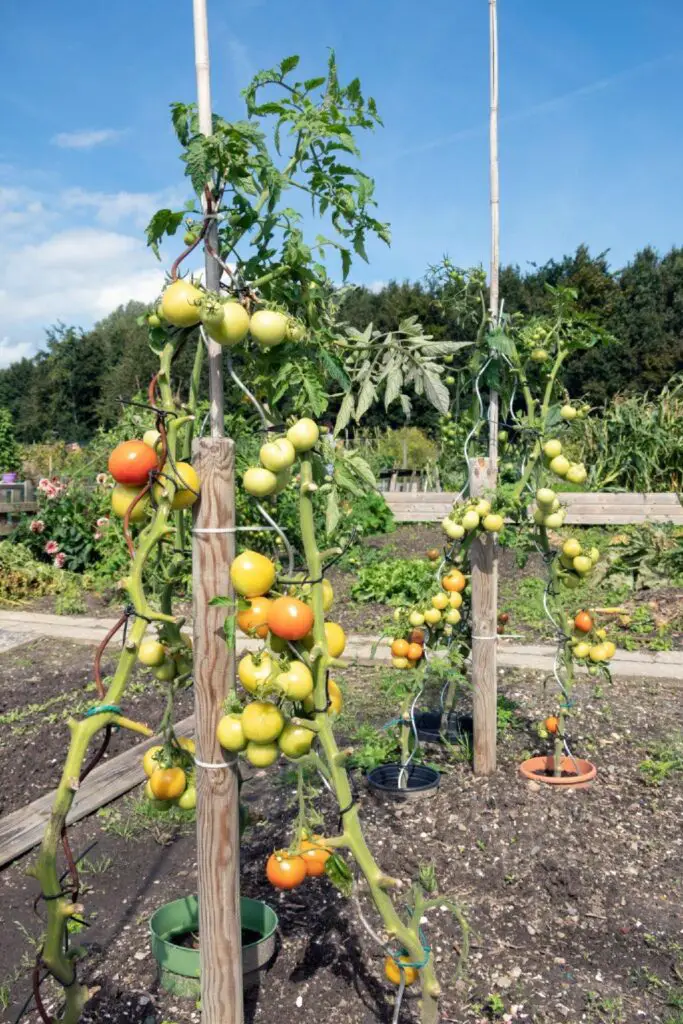
How To Train the Tomato Plant To Climb the Stake
Once the stake is in place and the tomato plant is planted at the base, it’s time to start training the plant to climb the stake. The first step is to tie the main stem of the plant to the stake using a soft tie, such as twine or a soft cloth strip. As the plant grows, it will begin to produce side shoots, or suckers, which should be removed or pinched off to redirect the plant’s energy into the main stem.
Tips for Tying the Plant to the Stake (e.g. Using Soft Ties, Not Tying Too Tightly)
When tying the plant to the stake, it’s important to use a soft tie that won’t damage the stem. Twine or a soft cloth strip is a good option. It’s also important to tie the plant to the stake loosely, so that it has room to grow and move. If the tie is too tight, it can restrict the growth of the stem and lead to damage.
How To Keep the Plant Upright and Encourage It To Climb the Stake
To keep the plant upright, it’s important to use a stake that is tall enough and sturdy enough to support the plant as it grows. As the plant grows, it may need to be tied to the stake again, using a new tie higher up on the stake. As the plant grows taller, it will naturally begin to cling to the stake, using the stake as a support. Regularly check the ties and adjust them as the plant grows.
Regularly pruning the plant will also help to encourage it to grow taller and stronger. This can be done by removing the suckers or side shoots that grow from the base of the plant. These shoots will stop the plant from making more fruit and make it grow taller instead.
Lastly, it’s important to monitor the growth of the plant and make adjustments as needed. This could mean taking off any broken leaves or branches, giving the plant more support, or adjusting the ties to make sure the plant stays upright and keeps climbing the stake. With the right care and attention, a staked tomato plant can be a healthy and productive addition to any garden
Common Problems with Staking Tomato Plants
Staking tomato plants is an important step to make sure they grow well and produce a healthy crop, but it can also cause a number of common problems. Wind damage and pests are among the most common issues that can arise when staking tomato plants. Here’s a look at these problems and how to address them:
Wind damage is a common problem when staking tomato plants. Strong winds can cause the stakes to snap or the plants to become damaged, which can lead to a reduced crop. To prevent wind damage, it is important to use sturdy stakes and to tie the plants securely to the stakes. Additionally, it’s a good idea to place the plants in a sheltered location, such as a greenhouse or against a building.
Pests are another common problem when staking tomato plants. Aphids, spider mites, and whiteflies can all attack the plants, causing damage and reducing the crop. To address this problem, it’s important to keep the area around the plants clean and free of debris.
You should also be on the lookout for any signs of pests and take action immediately if you notice any. Some good options for controlling pests are neem oil, insecticidal soap, or horticultural oil.
Another problem with staking tomato plants is the over-pruning of the plants. Tomato plants produce a lot of foliage, and it’s important to keep them well-pruned to improve air circulation and reduce the risk of disease.
Some gardeners, though, may prune their plants too much, leaving too few leaves on the plant and reducing the amount of energy that can be used to make fruit. It’s important to find a balance and only prune the plants as needed, leaving enough leaves on the plant to support fruit production.
Conclusion
Staking tomato plants is an important step in ensuring the health and productivity of your tomato garden. By providing support for the plants as they grow, staking helps to keep the plants upright, encourages taller growth, and improves overall yield. However, staking is not without its drawbacks. It can be time-consuming and labor-intensive, and if not done properly, it can cause damage to the plants.
When it comes to staking tomato plants, it’s important to choose the right stake for your needs. Consider the size of your garden, the number of plants you want to grow, and the space you have available. Also, take into account the strength and durability of the stake, as well as the ease of installation and maintenance.
Additionally, it is important to train the plant to climb the stake and prune it regularly to redirect the plant’s energy into growing taller. Monitoring the growth of the plant and making adjustments as needed is also crucial. By following these tips, you can ensure that your staked tomato plants will be healthy, productive, and easy to maintain.

